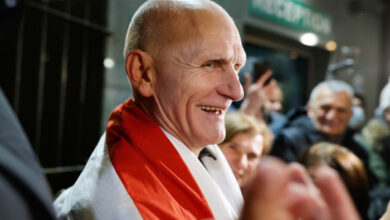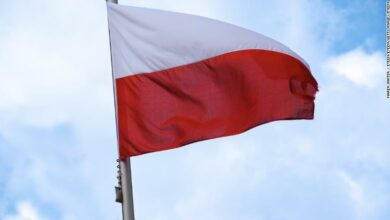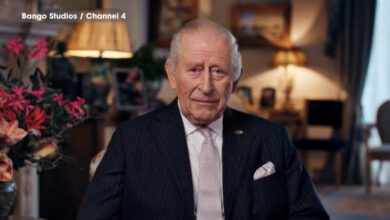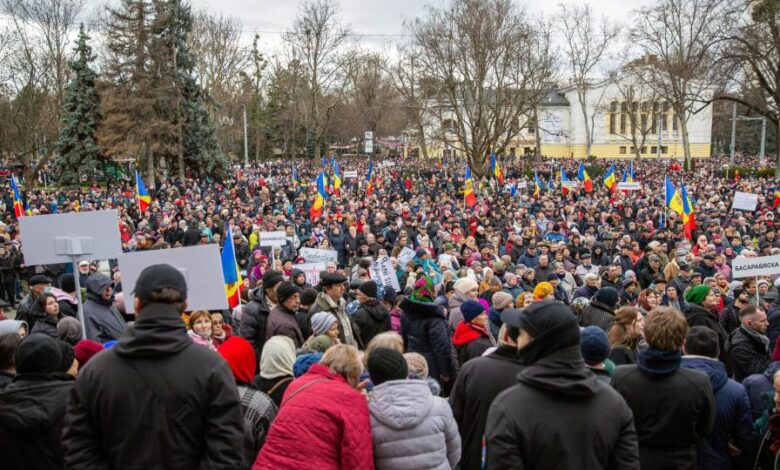
Moldova’s President, Maia Sandu, has accused Russia of using “saboteurs” disguised as civilians to stoke unrest amid a period of political instability, echoing similar warnings from Ukrainian President Volodymyr Zelensky.
Russian President Vladimir Putin has meanwhile baselessly accused Kyiv of planning its own assault on a pro-Russian territory in Moldova where Moscow has a military foothold, heightening fears that he is creating a pretext for a Crimea-style annexation.
US President Joe Biden met President Sandu on the sidelines of his trip to Warsaw last week, marking the one-year anniversary of Russia’s invasion.
Although there is no sign he has accepted her invite to visit, the White House did say he reaffirmed support for Moldova’s “sovereignty and territorial integrity.”
Here’s what you need to know.
What’s happening in Moldova?
Earlier this month, Zelensky warned that Ukrainian intelligence intercepted a Russian plan to destabilize an already volatile political situation in Moldova.
The recent resignation of the country’s prime minister followed an ongoing period of crises, headlined by soaring gas prices and sky-high inflation. Moldova’s new prime minister has continued the government’s pro-EU drive, but pro-Russian protests have since taken place in the capital, Chisinau, backed by a fringe, pro-Moscow political party.
Amid the tensions, Moldova’s President Sandu issued a direct accusation that Russia was seeking to take advantage of the situation.
Sandu said the government last fall had planned for “a series of actions involving saboteurs who have undergone military training and are disguised as civilians to carry out violent actions, attacks on government buildings and hostage-taking.”
Sandu also claimed individuals disguised as “the so-called opposition” were going to try forcing a change of power in Chisinau through “violent actions.” CNN is unable to independently verify those claims.
“It’s clear that these threats from Russia and the appetite to escalate the war towards us is very high,” Iulian Groza, Moldova’s former deputy foreign minister and now the director of the Chisinau-based Institute for European Policies and Reforms, told CNN.
“Moldova is the most affected country after Ukraine (by) the war,” he said. “We are still a small country, which has still an under-developed economy, and that creates a lot of pressure.”
What is Russia planning?
Despite Moscow’s pleas of innocence, its actions regarding Moldova bear a striking resemblance to moves it made ahead of its annexation of Crimea in 2014, and its full-scale invasion of Ukraine last year.
On Tuesday, Putin revoked a 2012 foreign policy decree that in part recognized Moldova’s independence, according to Reuters.
Then on Thursday, Russia’s Ministry of Defense accused Ukraine of “preparing an armed provocation” against Moldova’s pro-Russian separatist region of Transnistria “in the near future,” state-media TASS reported.
No evidence or further details were offered to support the ministry’s accusation, and it has been rubbished by Moldova.
But the claim has put Western leaders on alert, coming almost exactly a year after Putin made similar, unsubstantiated claims that Russians were being targeted in the Donbas – the eastern flank of Ukraine where Moscow had supported militant separatists since 2014 – allowing him to cast his invasion of the country as an issue of self-defense.
“It was the case before – we have seen constant activities of Russia trying to explore and exploit the information space in Moldova using propaganda,” Groza said.
“With the war, all these instruments that Russia was using before have been multiplied and intensified,” he said. “What we see is a reactivation of Russian political proxies in Moldova.”
“I do see lots of fingerprints of Russian forces, Russian services in Moldova,” Poland’s Prime Minister Mateusz Morawiecki told CBS last Sunday. “This is a very weak country, and we all need to help them.”
Why does Russia have a foothold in Moldova?
Central to Russia’s interests in Moldova is Transnistria, a breakaway territory that slithers along the eastern flank of the country and has housed Russian troops for decades.
The territory – a 1,300 square mile enclave on the eastern bank of the Dniester River – was the site of a Russian military outpost during the last years of the Cold War. It declared itself a Soviet republic in 1990, opposing any attempt by Moldova to become an independent state or to merge with Romania after the disintegration of the Soviet Union.
When Moldova became independent the following year, Russia quickly inserted itself as a so-called “peacekeeping force” in Transnistria, sending troops in to back pro-Moscow separatists there.
War with Moldovan forces ensued, and the conflict ended in deadlock in 1992. Transnistria was not recognized internationally, even by Russia, but Moldovan forces left it a de facto breakaway state. That deadlock has left the territory and its estimated 500,000 inhabitants trapped in limbo, with Chisinau holding virtually no control over it to this day.
Why does Moldova matter?
Moldova is a country at a crossroads between east and west. Its government and most of its citizens want closer ties to the EU, and the country achieved candidacy status last year. But it’s also home to a breakaway faction whose sentiment Moscow has eagerly sought to rile up.
It has been a flashpoint on the periphery of Russia’s invasion of Ukraine for the past year, with Russian missiles crossing into Moldovan airspace on several occasions, including earlier this month.
A series of explosions in Transnistria last April spiked concerns that Putin was looking to drag the territory into his invasion.
Russia’s stuttering military progress since then had temporarily allayed those fears. But officials in Moldova have been warning the West that their country could be next on Putin’s list.
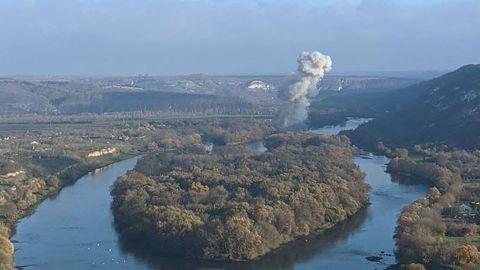
Last month, the head of Moldova’s Security Service warned there is a “very high” risk that Russia will launch a new offensive in Moldova’s east in 2023. Moldova is not a NATO member, making it more vulnerable to Putin’s agenda.
Should Russia launch a Spring offensive that centers on Ukraine’s south, it may seek again to creep towards Odesa and then link up with Transnistria, essentially creating a land bridge that sweeps through southern Ukraine and inches even closer to NATO territory.
CNN’s Tim Lister, Hannah Ritchie and Niamh Kennedy contributed reporting.


